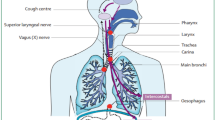Abstract
Mel frequency cepstral coefficients are one of the most prominent sets of primary features of an audio signal which are used for speech detection and cough analysis. This paper presents a new method that can overcome some of the common problems faced by using MFCCs for cough detection. In the proposed method, the most prominent part of the cough sample (HCP) is extracted and used to obtain the MFCC vectors of that particular window. These HCP MFCC vectors work as a standard comparison index for all cough samples to detect any respiratory disorders. The evaluation of the proposed method is done using 40 samples of COVID-19 patients of which 20 are positive and 20 are negative. The accuracy of the proposed method is compared with that of the standard MFCC method for the same set of samples. The proposed HCP MFCC method produces results that are 7.84% more accurate than the standard method. By bringing a standard set of comparing features that can work for almost all use cases, this method can be used as a quick identifying tool for various respiratory diseases.
Access this chapter
Tax calculation will be finalised at checkout
Purchases are for personal use only
Similar content being viewed by others
References
Rudraraju, G., Palreddy, S. D., Mamidgi, B., Sripada, N. R., Padma Sai, Y., Kumar, V. N., & Haranath, S. (2020). Cough sound analysis and objective correlation with spirometry and clinical diagnosis. Informatics in Medicine Unlocked, 19. 100319. https://doi.org/10.1016/j.imu.2020.100319; Clerk Maxwell, J. (1892). A treatise on electricity and magnetism (3rd ed., Vol. 2, pp. 68–73). Oxford: Clarendon.
Grace, M. S., Dubuis, E., Birrell, M. A., & Belvisi, M. G. (2013). Pre-clinical studies in cough research: Role of transient receptor potential (TRP) channels. Pulmonary Pharmacology & Therapeutics,26(5), 498–507. https://doi.org/10.1016/j.pupt.2013.02.007
Korpáš, J., Sadloňová, J., Vrabec, M. (1996). Analysis of the Cough sound: An overview. Pulmonary Pharmacology, 9(5–6), 261–268. ISSN 0952-0600. https://doi.org/10.1006/pulp.1996.0034
Parida, S., Mohanty, A., Nayak, S. C., Pati, B., & Panigrahi, C. R. (2021). Study and impact analysis of COVID-19 pandemic clinical data on infection spreading (p. 225). In Data science for COVID-19: Volume 2: Societal and medical perspectives.
Michalak, N., Sng, O., Wang, I., & Ackerman, J. (2020). Sounds of sickness: Can people identify infectious disease using sounds of coughs and sneezes? Proceedings of the Royal Society B: Biological Sciences.,287, 20200944. https://doi.org/10.1098/rspb.2020.0944
Panigrahi, C., Pati, B., Rath, M., & Buyya, R. (2021). Computational modeling and data analysis in COVID-19 research. CRC Press.
Higenbottam, T. (2002). Chronic cough and the cough reflex in common lung diseases. Pulmonary Pharmacology & Therapeutics, 15(3), 241–247. ISSN 1094-5539.
Ramasamy, V., et al. (2021). Application of deep learning strategies to assess COVID-19 patients. In Computational intelligence techniques for combating COVID-19. EAI/Springer innovations in communication and computing. Springer. https://doi.org/10.1007/978-3-030-68936-0_2
Morice, A. H., Fontana, G. A., Belvisi, M. G., et al. (2007). ERS guidelines on the assessment of cough. European Respiratory Journal,29(6), 1256–1276.
Author information
Authors and Affiliations
Corresponding author
Editor information
Editors and Affiliations
Rights and permissions
Copyright information
© 2023 The Author(s), under exclusive license to Springer Nature Singapore Pte Ltd.
About this paper
Cite this paper
Monish Singam, S., Rajesh Menon, P., Ezhilan, M., Arjun, B.R., Kalaivani, S. (2023). Respiratory Disease Diagnosis with Cough Sound Analysis. In: Pati, B., Panigrahi, C.R., Mohapatra, P., Li, KC. (eds) Proceedings of the 6th International Conference on Advance Computing and Intelligent Engineering. Lecture Notes in Networks and Systems, vol 428. Springer, Singapore. https://doi.org/10.1007/978-981-19-2225-1_1
Download citation
DOI: https://doi.org/10.1007/978-981-19-2225-1_1
Published:
Publisher Name: Springer, Singapore
Print ISBN: 978-981-19-2224-4
Online ISBN: 978-981-19-2225-1
eBook Packages: EngineeringEngineering (R0)




